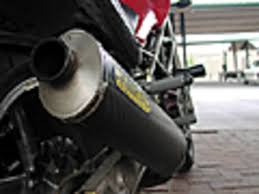motorcycle helmet law minnesota

Off-highway vehicles (OHVs) include all-terrain vehicles (ATVs), off-highway motorcycles (OHMs), and off-road vehicles (ORVs) such as 4x4s. There are 54 state and grant-in-aid trails for you to ride, thanks to club volunteers and the DNR—or you can find some great riding in Minnesota state forests! Temporary closures may happen due to weather, special events, logging and road work. Subscribe to email updates » All non-residents must purchase a non-resident trail pass to ride on state or grant-in-aid trails. OHVs are generally permitted on state forest roads and trails in accordance with state forest motor vehicle use classifications and regulations. Safety training is recommended for everyone that operates an OHV. It is required for ATV riders born after July 1, 1987 and OHM riders under the age of 16.Your tax deductible contribution will help FairWarning to deliver strong investigative journalism in the public interest.While I don’t always see eye-to-eye with the political views and legislative agenda of the Insurance Institute of Highway Safety, I do love their research.

According to the front page of its website IIHS is an “…independent, non-profit scientific and educational organization dedicated to reducing the losses…on the nation’s highways…” Of course, when you read the fine print you see that the “Insurance” part of the IIHS name means that the money supporting the IIHS comes from the biggest auto insurers in the world. While this slant may indicate that “reducing losses” means paying less on claims to those who get hurt [you don’t see the IIHS supporting bills to INCREASE pain and suffering awards], it doesn’t change the numbers – only the “spin” when the numbers are whacked around in public! In the arena of bicycles and motorcycle, the IIHS does strong research on death/injury statistics. It then tinges those numbers with a “Pro Helmet Law” flavoring which I, personally, tend to ignore. I simply do not feel that the government should be telling us what kind of hat to wear when we go ride our bikes and motorcycles.

The numbers don’t support it – rather, the numbers would indicate that if Kevlar suits and helmets were required for CAR drivers and passengers, they would be a LOT safer… when they pass THAT law, they can tackle the really small problem of bicycle/motorcycle injuries. The IIHS published an excellent summary of bicycle and motorcycle laws, which is shown below. You can also go here to read about it up close and personal.
best used 1000cc motorcycle Currently in OHIO there is NO bicycle helmet law.
pro mesh motorcycle jacket rain waterproof whiteHowever, there is one percolating in the Legislature at this very moment.
motorcycle shop deerfield beach
More on that later. For now, here’s the IIHS summary of Bicycle and Motorcycle Helmet Laws in the US. Twenty states and the District of Columbia have motorcycle helmet laws that require all riders to wear a helmet. Twenty-seven states have a motorcycle helmet law that only require some riders to wear a helmet. Three states (Illinois, Iowa, and New Hampshire) do not have a motorcycle helmet law.
motorcycle repair needles ca Low-power cycle (LPC) is a generic term used by IIHS to cover motor-driven cycles, mopeds, scooters, and various other 2-wheeled cycles excluded from the motorcycle definition.
motorbike shop in dumfriesWhile state laws vary, a cycle with an engine displacement of 50 cubic centimeters or less, brake horsepower of 2 or less, and top speeds of 30 mph or less typically is considered an LPC.
motorcycles for sale pueblo
Twenty-two states have motorcycle helmet laws that cover all low-power cycles. Twenty-five states and the District of Columbia have laws that cover some low-power cycles. Twenty-one states and the District of Columbia have bicycle helmet laws that require some young bicyclists to wear a helmet. Local law may require helmet use for some or all bicyclists. Minnesota House of Representatives
indian motorcycle throttle jacket House Members and Staff Secretary of the Senate Senate Counsel, Research & Fiscal Analysis Joint Departments, Offices, and Commissions Office of the Legislative Auditor Legislative Coordinating Commission (LCC) Legislative-Citizen Commission on MN Resources (LCCMR) Legislative Commission on Pensions & Retirement (LCPR) Lessard-Sams Outdoor Heritage Council Schedules, Calendars, and Legislative Business Calendar for the Day

Supplemental Calendar for the Day General Orders of the Day Floor Votes by Member Legislators Past & Present Joint Committees & Task Forces Bills In Conference Committtee Side by Side Comparisons Bill Search & Status (House) Bill Search & Status (Senate) Bill Search & Status Statutes, Laws, and Rules Statutes by Topic (Index) Session Laws by Topic (Index) Session Laws Changed (Table 1) Statutes Changed (Table 2) Rules by Topic (Index) Multimedia — Audio, Video, Broadcast TV, News, & Photos Audio & Video Archives Legislative Research, Reports & Information Office Research & Reports Minnesota Legislative History Guide MN Government in BriefMotorcycle helmets provide the best protection from head injury for motorcyclists involved in traffic crashes. The passage of helmet use laws governing all motorcycle riders is the most effective method of increasing helmet use. The National Highway Traffic Safety Administration (NHTSA) encourages States to enact legislation that requires all motorcycle riders to wear helmets.

Additionally, NHTSA strongly supports comprehensive motorcycle safety programs that include motorcycle helmet usage, rider education, motorcycle operator licensing, and responsible use of alcohol. Nineteen States, the District of Columbia, and Puerto Rico require helmet use for all motorcycle operators and passengers. In another 28 States, only those under a certain age, usually 18, are required to wear helmets. Three States do not have laws requiring helmet use. Since 1989, six States (Oregon, Nebraska, Texas, Washington, California, and Maryland) have enacted helmet use laws thatgovern all motorcycle occupants.In Oregon, there was a 33% reduction in motorcycle fatalities the year after its helmet law was restored; Nebraska had a 32% reduction in the first year of its law; Texas had a 23% reduction; Washington State had a 15% reduction; California had a 37% reduction; and Maryland had a 20% reduction. Since 1997, six States (Arkansas, Texas, Kentucky, Louisiana, Florida, and Pennsylvania) have weakened universal helmet laws to limit coverage to those under the age of 21.

These six States were the first States since 1983 to repeal or weaken a universal helmet law. Helmet use decreased following the changes in helmet laws in Arkansas and Texas. In the first full year following repeal of the law, fatalities in Arkansas increased by 21%, compared with the fatality rate in the last full year under the law that required all riders to wear a helmet. In Texas, operator fatalities increased by 31% compared with the previous year when the helmet law was in place. Arkansas pre-hospital EMS data showed an increase in the number of injured motorcyclists and in the proportion of all injured motorcyclists with head injuries following the change in helmet laws. Texas Trauma Registry data showed that the proportion of motorcyclists treated for traumatic brain injury increased and that treatment costs for traumatic brain injury cases also increased following the law change. Treatment costs for other injury cases did not change to any major extent. Motorcycle crash-related injuries, fatalities, and fatality rates increased in Kentucky (1998) and Louisiana (1999) following the weakening of their helmet laws covering all riders.

Kentucky crash data show that in the two full years just prior to the helmet law repeal, there was an average of 573 motorcycle crash related injuries, while in the two post repeal years, there was an average of 785 injury crashes, a 37% increase. Louisiana crash data show injuries increased by more than 48%, from an average of 741 motorcyclist injuries in last two years of the all-rider helmet law to 1,101 in 2000. Fatality numbers increased in Kentucky from an average of 23 per year prior to repeal to an average of 36 following the repeal. In Louisiana, the average number of fatalities jumped from 26 to 55. In Kentucky motorcyclists killed per 10,000 registered motorcycles averaged 6.4 in the two years prior to repeal and jumped to 8.8 in the two years following repeal. Similarly, in Louisiana, the average fatality rate went from 4.5 in the two years before repeal to 7.9 in the year following repeal. Observed helmet use dropped in both Kentucky and Louisiana. In Kentucky, observed helmet use dropped from 96% in 1997 to 56% in 2001.

Louisiana"s observed helmet use dropped from 100% in 1997 to 52% in 2001. Analysis of linked data from the Crash Outcome Data Evaluation System (CODES) in three States with universal helmet laws showed that without the helmet law, the total extra inpatient charges due to brain injury would have almost doubled from $2,325,000 to $4,095,000. A number of studies have compared hospital costs for helmeted and unhelmeted motorcyclists involved in traffic crashes. These studies have revealed that unhelmeted riders involved in crashes are less likely to have insurance and more likely to have higher hospital costs than helmeted riders involved in similar crashes. The CODES study, mentioned earlier, also found that brain injury cases were more than twice as costly as non-brain injury cases for the one-year period studied. Among the un-helmeted motorcycle in-patients, charges for those suffering brain injuries were 2.25 times higher than for those without brain injuries. Long-term costs were not included.